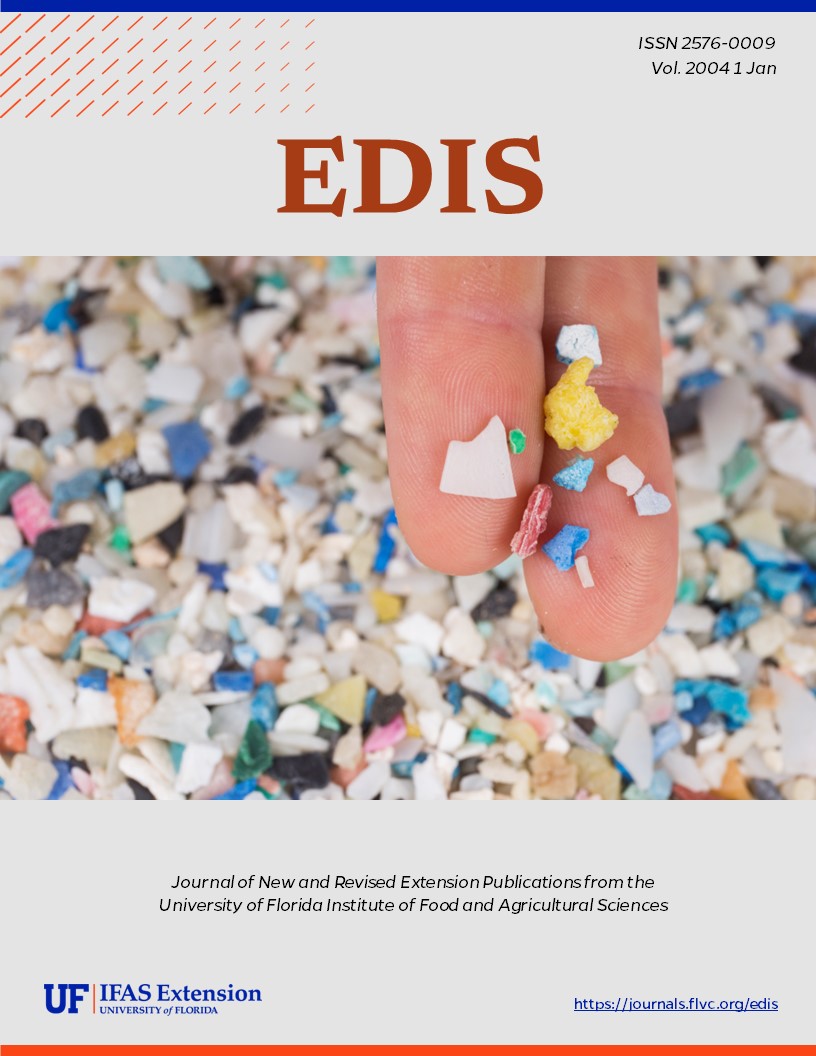Abstract
There are about 5,000 described species of thrips (insects in the Order Thysanoptera) (Moritz et al. 2001; Mound 1997). Most feed on fungi and live in leaf litter or on dead wood. The species that feed on higher plants occur mostly in the Family Thripidae. This family includes the important pest species. Some reproduce in flowers and feed on the cells of the flower tissues, on pollen grains, and on small developing fruits. Many of the flower-living
species are partly predatory. Other species primarily feed on leaves. Some species are predators on small
insects. Some of the most common pest species feed on a wide range of plants and even prey on mites. This document is ENY682, one of a series of the Entomology and Nematology Department, Florida Cooperative Extension Service, Institute of Food and Agricultural Sciences, University of Florida. Date published: January 8, 2004.
This work is licensed under a Creative Commons Attribution-NonCommercial-NoDerivs 4.0 International (CC BY-NC-ND 4.0) license.

